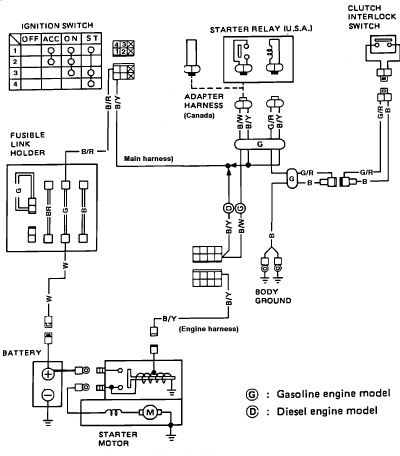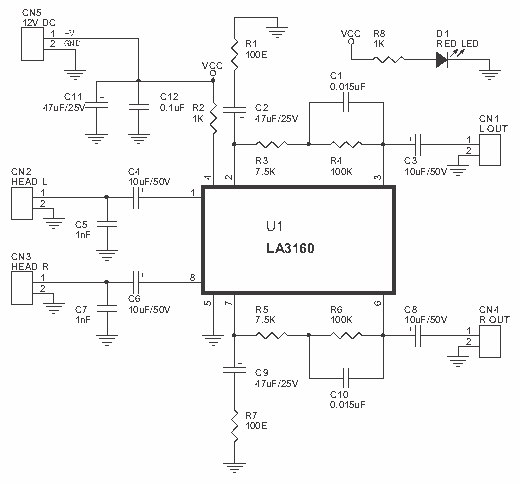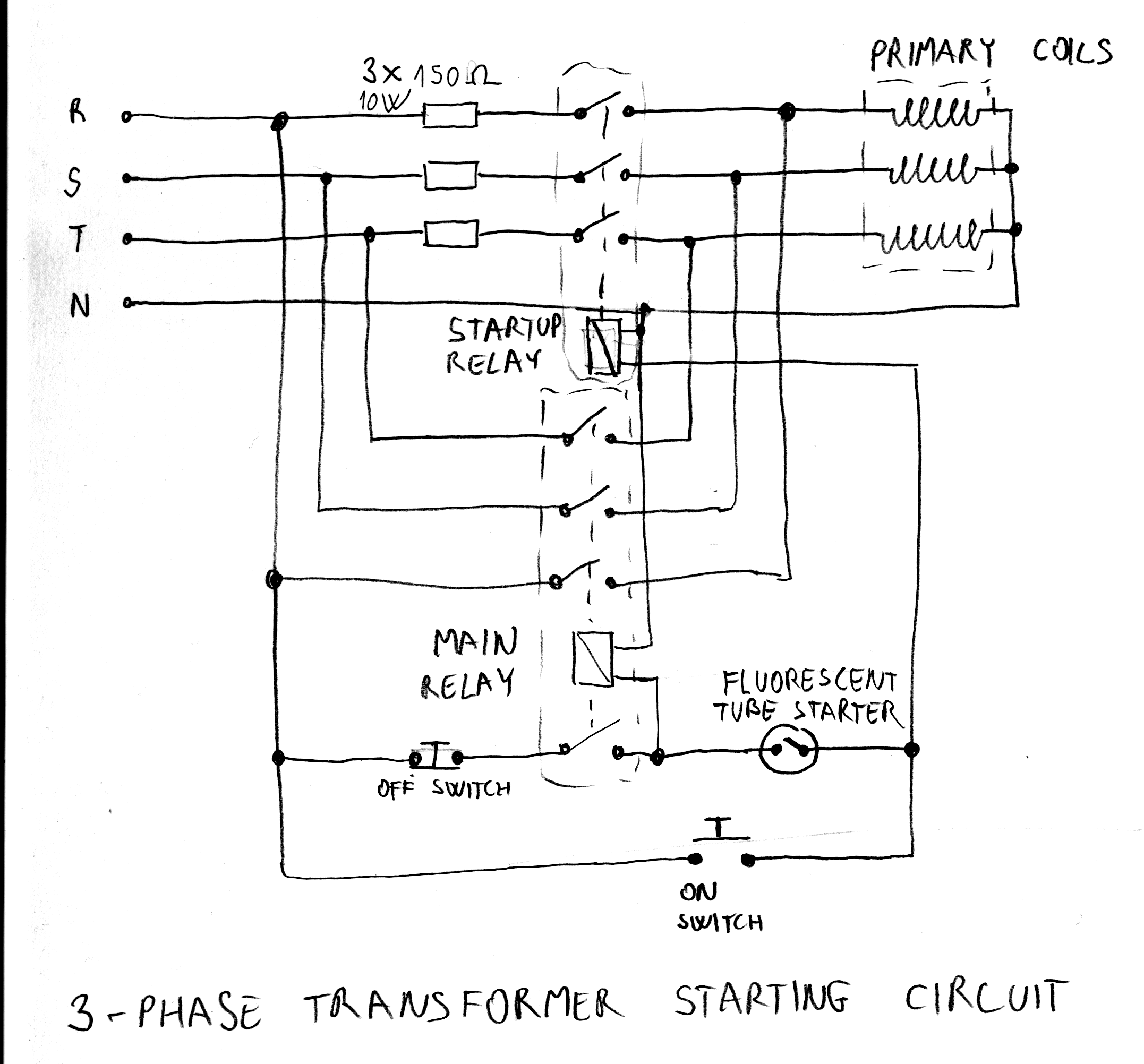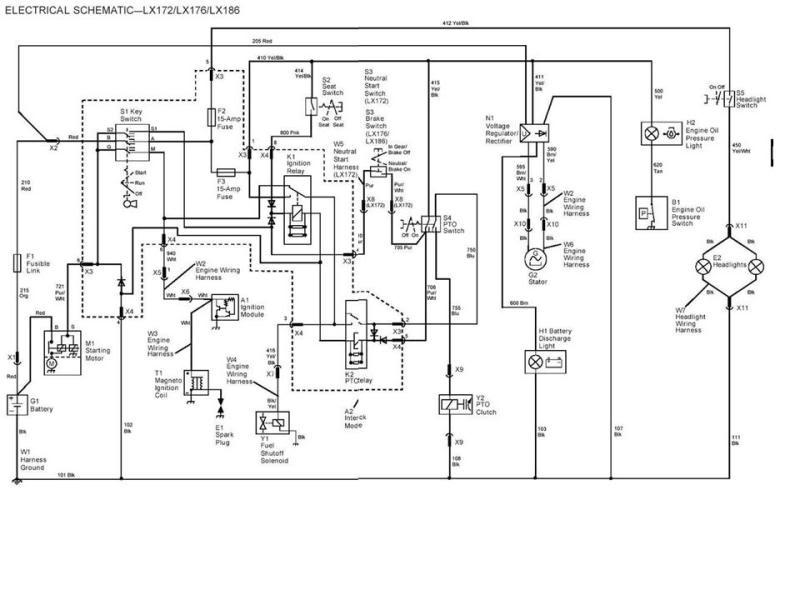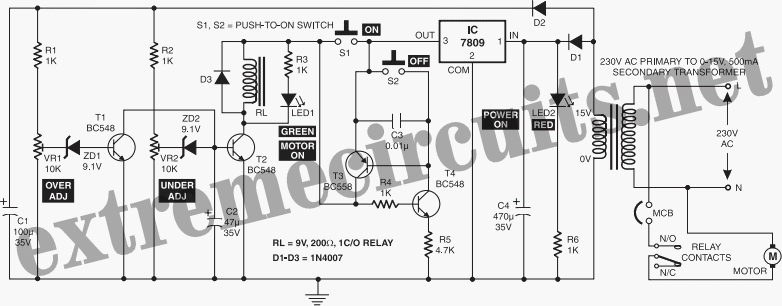
Telephone-controlled tape starter
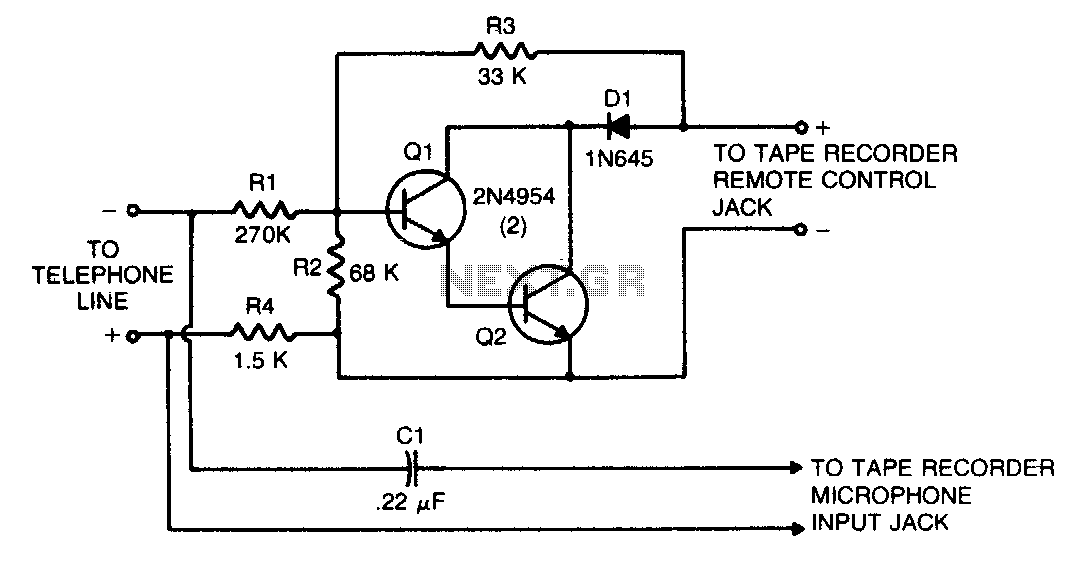
This circuit transforms a tape recorder into a fully automatic device for recording telephone conversations without requiring an external power source. The voltage at the switch terminals of the tape recorder is applied to a pair of Darlington-connected transistors, Q1 and Q2, which activate the tape recorder. To deactivate the transistors and stop the tape recorder, a negative voltage is applied to the base of Q1 from the phone line. When the telephone receiver is on the hook, approximately 50 volts DC is present across the phone, distributed among resistors R1, R2, and R4 in such a way that the base of Q1 remains sufficiently negative to keep the tape recorder off. When the receiver is lifted, the voltage on the telephone line drops to about 5 volts, resulting in an inadequate negative voltage at the base of Q1 to maintain its cutoff state, thereby starting the tape recorder and initiating the recording process.
This circuit operates by utilizing the voltage characteristics of a standard telephone line to control the recording device. The two Darlington transistors, Q1 and Q2, are configured to provide a high current gain, ensuring that even a small change in voltage at the base of Q1 can switch the tape recorder on or off effectively. Resistors R1, R2, and R4 play a crucial role in setting the biasing conditions for Q1, ensuring that it remains off when the phone is on-hook due to the high DC voltage present.
When the receiver is lifted, the voltage drop across the phone line reduces the biasing voltage at the base of Q1, allowing it to turn on. This action, in turn, activates Q2, which completes the circuit to the tape recorder, allowing it to start recording. The design ensures that no external power source is necessary, as it relies solely on the existing telephone line voltage, making it a practical solution for automatic recording without the need for additional batteries or power supplies.
The circuit's simplicity and reliance on passive components make it an efficient design for users seeking to record telephone conversations automatically. Care should be taken to ensure that the components are rated appropriately for the voltages involved, and that the circuit is housed in a suitable enclosure to prevent accidental short circuits or interference with normal telephone operation.This circuit converts a tape recorder into a completely automatic telephone conversation recording instrument that needs no external power source. Voltage at the switch terminals of tape recorder applied to a pair of Darlington-connected transistors, Ql and Q2, will turn on and start the tape recorder.
To turn the transistors off, and thereby stop the machine, apply a negative voltage to the base of Ql from the phone line When the telephone receiver is on the hook, there is typically about 50 volts dc across the phone divided across Rl, R2, and R4 in such a way that the base of Ql is sufficiently negative to keep the tape recorder off. When the phone"s receiver is picked up, the voltage on the telephone line drops to about 5 volts, which leaves-insufficient negative voltage on the base of Ql to keep it cut off, so the tape recorder starts and begins to record.
This circuit operates by utilizing the voltage characteristics of a standard telephone line to control the recording device. The two Darlington transistors, Q1 and Q2, are configured to provide a high current gain, ensuring that even a small change in voltage at the base of Q1 can switch the tape recorder on or off effectively. Resistors R1, R2, and R4 play a crucial role in setting the biasing conditions for Q1, ensuring that it remains off when the phone is on-hook due to the high DC voltage present.
When the receiver is lifted, the voltage drop across the phone line reduces the biasing voltage at the base of Q1, allowing it to turn on. This action, in turn, activates Q2, which completes the circuit to the tape recorder, allowing it to start recording. The design ensures that no external power source is necessary, as it relies solely on the existing telephone line voltage, making it a practical solution for automatic recording without the need for additional batteries or power supplies.
The circuit's simplicity and reliance on passive components make it an efficient design for users seeking to record telephone conversations automatically. Care should be taken to ensure that the components are rated appropriately for the voltages involved, and that the circuit is housed in a suitable enclosure to prevent accidental short circuits or interference with normal telephone operation.This circuit converts a tape recorder into a completely automatic telephone conversation recording instrument that needs no external power source. Voltage at the switch terminals of tape recorder applied to a pair of Darlington-connected transistors, Ql and Q2, will turn on and start the tape recorder.
To turn the transistors off, and thereby stop the machine, apply a negative voltage to the base of Ql from the phone line When the telephone receiver is on the hook, there is typically about 50 volts dc across the phone divided across Rl, R2, and R4 in such a way that the base of Ql is sufficiently negative to keep the tape recorder off. When the phone"s receiver is picked up, the voltage on the telephone line drops to about 5 volts, which leaves-insufficient negative voltage on the base of Ql to keep it cut off, so the tape recorder starts and begins to record.
